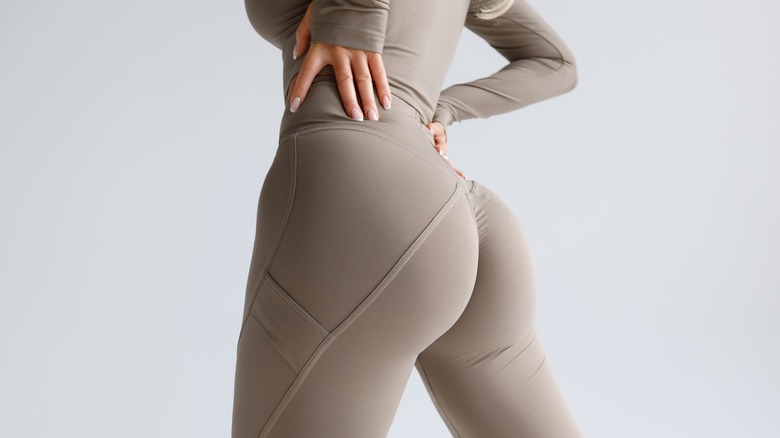Why You Should Try Running On An Incline
Whether it was at home, at the gym, or at your high school gym class, you've probably experimented with the incline buttons of a treadmill at some point. Treadmill incline training can provide a range of physical benefits — all of which you can get from walking uphill outdoors if you don't have access to a treadmill or just prefer the great outdoors.
Treadmill Reviews claims that most standard treadmills include an incline setting with a maximum grade of 10-20%. Many also offer a setting that allows you to choose a workout that includes varying speeds and inclines at random intervals for random amounts of time. The goal of this option is to mimic the ground outside, which could have a combination of flat portions and hills.
You may already be familiar with certain incline workouts, like the 12-3-30 treadmill workout, but what about running on an incline? Some may find it intimidating because of the fall risk, but just as with incline walking, incline running can do wonders for your body if done correctly. And these benefits far outweigh the risks.
It can increase your calorie burn
If you want to add some intensity to your treadmill workout without increasing the speed, adding an incline is a great way to do it. With this change, you'll see an increase in your heart rate since you'll be fighting gravity with the weight of your body.
This accelerated heart rate response will help you burn more calories during your workout, as Runtastic explains, as long as you don't lower your speed. How many more calories? Livestrong claims it can be as much as 50% more. Plus, if you're in the fat-burning heart rate zone during the workout, you can also burn more fat (via Medical News Today) with a higher incline.
So how high should you go? That depends on your fitness level, speed, and length of time you plan to run at a particular incline percentage. But if you're a beginner, it's best to be safe and make small increases at first and see how your body feels. If at any point you feel like you need to hold on to prevent falling off, it means the incline is too high, as Verywell Fit states.
It can strengthen various muscles
It's no surprise that walking up a hill or ramp is more challenging than walking on a flat road. The same logic can be applied to incline running on a treadmill. Remember, when you increase the incline, your body has to work harder to resist gravity since the surface angle becomes steeper. According to Brooks, "When you run uphill, you further engage certain sets of muscles compared to running on a flat surface."
Incline running activates and strengthens the quadriceps, glutes, hamstrings, hip flexors, and even the Achilles tendons, as Verywell Fit explains. Marathon Handbook adds that it can also strengthen the arms since you need to pump them harder to run up the hill. You also need to engage your core (abs, torso, etc.) more.
Strengthening these muscles can help you run faster with time, and according to Runner's World, "you can expect a significant improvement in your muscle power and speed" after only six weeks of incline resistance training.
Adding incline to your running workouts is a great way to increase your overall calorie burn while strengthening various muscles at the same time. And if you stick to a consistent incline resistance training program, you can become a stronger, faster runner in less than two months.


